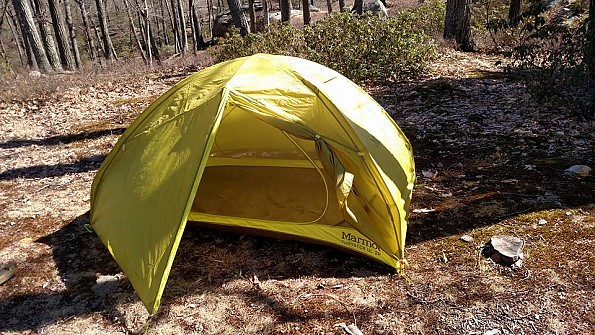Marmot Tungsten UL 2P

A 2-person lightweight tent that combines freestanding structure, durable floor and fly, and a lot of space while keeping a sane price tag. But it compromises on not being ultralight, having asymmetric vestibules, and full mesh inner walls.
Pros
- Spacious
- Lightweight
- Weatherproof
- Freestanding
- Sturdy
Cons
- Not ultralight
- Full mesh inner wall
- Only 2 pockets and they are too small
- The fly is hard to properly tight
- Stakes are not good enough
I’ve been needing to lighten up my gear and a tent is one of the heaviest items in my bag. My requirements for a tent were a 2-person tent for versatility, maximum weight of 1.7 kg, freestanding as I usually camp at places where it’s hard to place stakes, sturdy enough to withstand bad climate and camping grounds, and reasonably priced.
After narrowing my choices, it came down to the Marmot Tungsten UL 2P and the MSR Hubba Hubba NX 2. The Marmot and the MSR were almost identical in terms of specs, I liked more the MSR design with having less mesh, better stuff sack, and having a reputation as the golden standard of backpacking tents, although it came with no seam tape at the time and had mixed reviews.
The Marmot Tungsten UL 2P on the other hand, seemed to be more straightforward, with a simple design that I came to love having a Marmot Limelight 2P tent. The Tungsten seemed to be made of durable materials, also having bigger floor area and larger headroom, though the MSR was enough for me.
Here I must praise again Marmot’s costumer service, replacing my Limelight with a new tent after four years of use due to leakage, with no questions asked, thus assuring me that if I’ll run into problems with a new tent, Marmot’s warranty will cover it.
Eventually the price of the Tungsten being ~150$ cheaper than the MSR made me choose it.
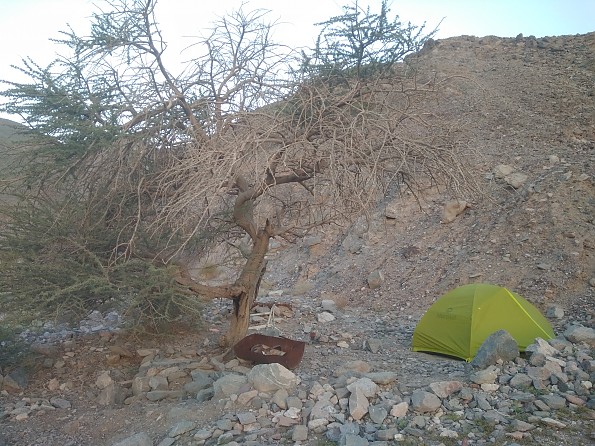
I tested the tent on several multi-day treks mostly in desert environment and mostly using it solo, with strong wind gusts and occasional light rain. I haven’t got the chance to test it in a proper downpour.

Setting up: Fairly simple even for one person, it does have a tapered floor so you would want to set it in the right direction when you are 2 (especially if there’s a slope), so your heads will be at the wider end. There are 2 pre-bent poles connected to each other at the center, so you don’t need to match it to the tapered floor.
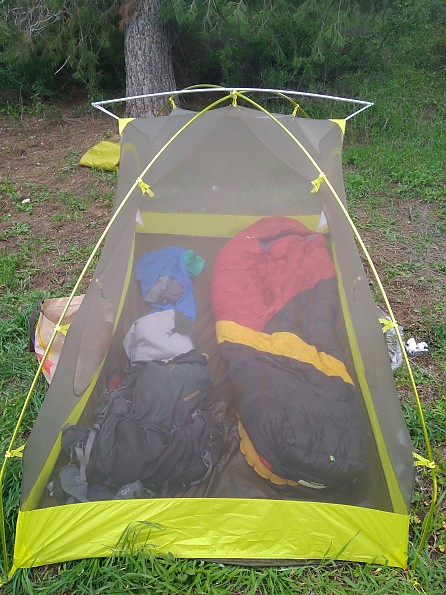
After you set up the poles, you just snap the body to the poles with the clips, they are small and ultralight but do the job. There’s a short cross pole that clicks into plastic hubs above the doors, stretching them upright.
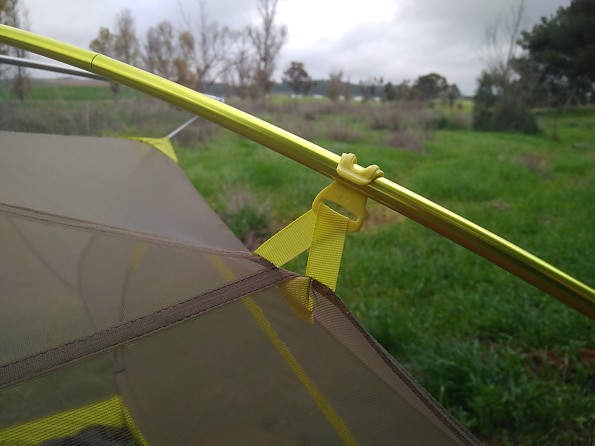
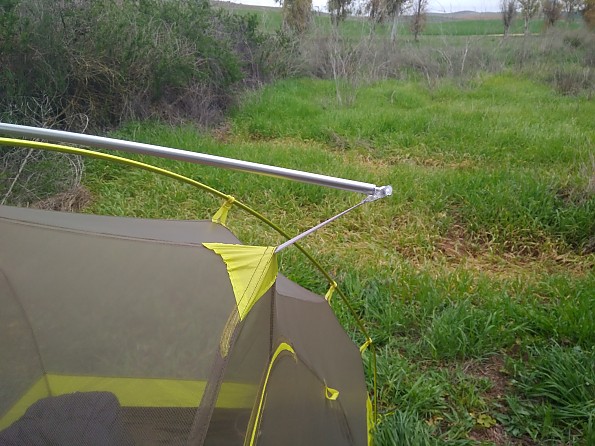
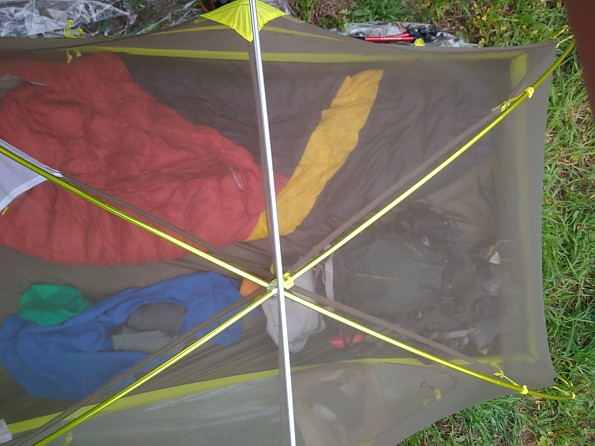
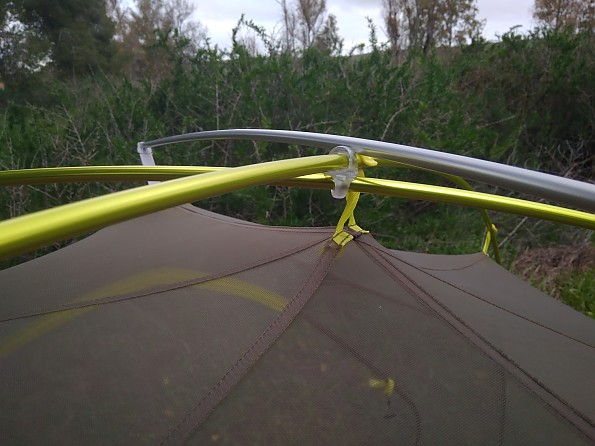
The rainfly also has directionality, and it comes with color codes, 2 red tapes at the bottom indicate what corners it should snap to on the tent body. Here there’s a weird design of asymmetrical vestibules probably to save weight, one being huge and the other small. The rainfly uses clips that attach to loops on the corners of the floor, it also has plastic hubs that connect to the hubs of the cross pole which is a smart addition. You can secure it to the poles with Velcro straps.
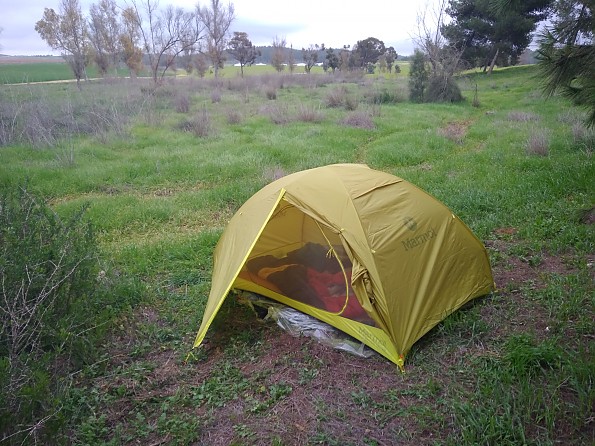
Overall, you’ll need 6 stakes for the complete setup: 4 for the corners and 2 for the 2 vestibules.
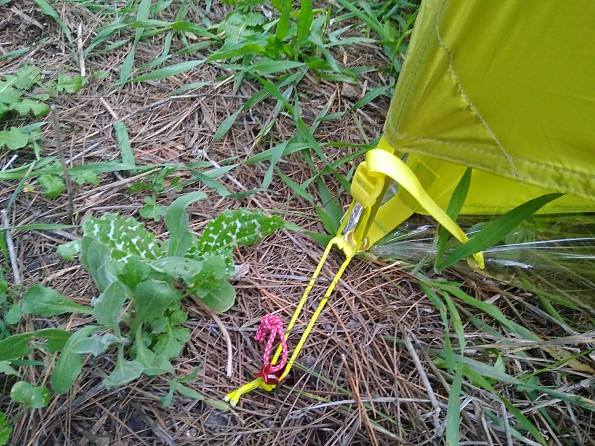
The fly has a vent on the wide end with a collapsible stud.

If you set it up in high winds, due to the tent tapered design and asymmetrical vestibules, you’ll want the narrower end to face the wind. It could mean that the narrower end will be in a higher level than the wider end (and where your head should be), or just not having enough clearance to properly stake the larger vestibule.
Living space: This is probably the tent’s highest value, having the largest floor area and head space in the category, with a pole design that creates close to vertical walls. It is large enough for 2 persons with some equipment. The doors are big and easy to roll up.
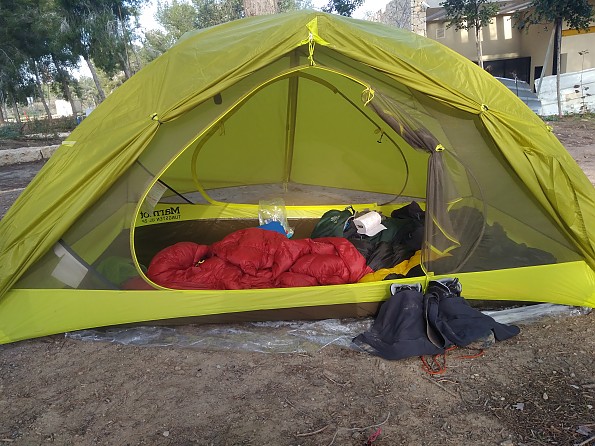
The large vestibule is big enough for a backpack, shoes and other stuff, the smaller vestibule can fit shoes, cooking equipment and so on. I find this design completely manageable, and when I sleep alone, I prefer to use the small vestibule to get in and out as it's easier to reach the zipper. On the large vestibule the zipper is out of reach from inside the tent, at least for me.
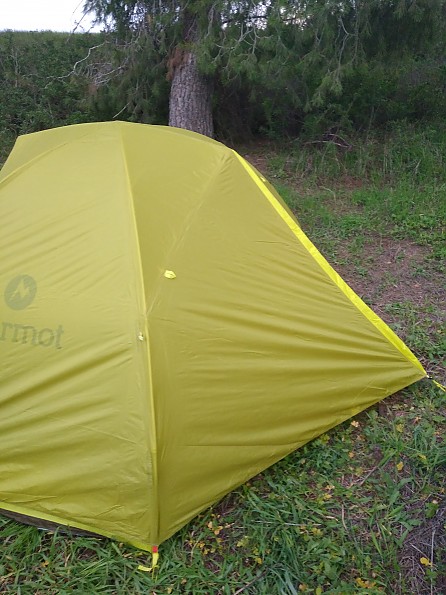
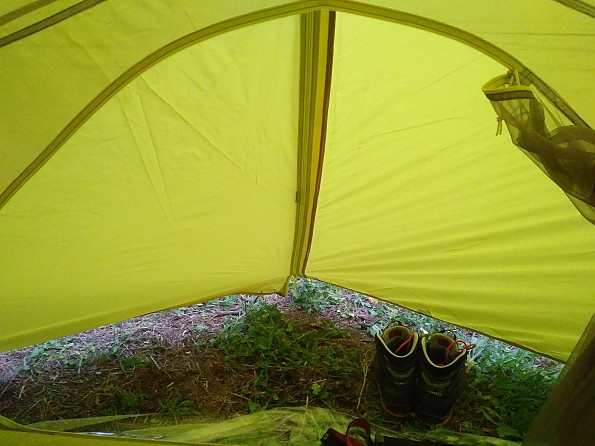
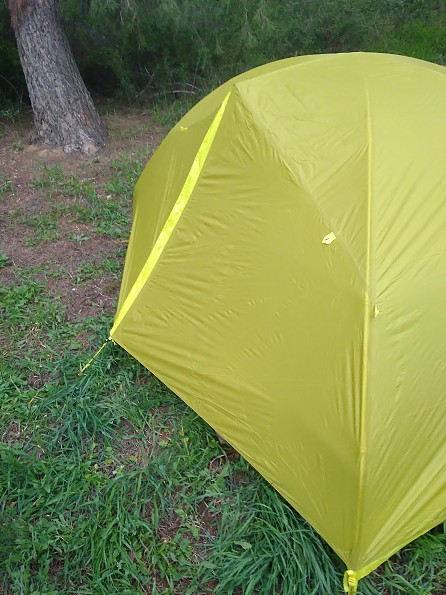
There are 2 pockets at the wider end, one on each side, but they are diagonal and small and not very functional. There’s another “lampshade” pocket on top that meant to diffuse your headlamp beam to create a nicer environment. As my Black Diamond Spot has a wide beam like many other headlamps, the pocket doesn’t really do anything, but it’s still a convenient place to put your headlamp. There are loops for a gear loft that could be very helpful, but it is sold separately and it's very expensive.


Weatherproof: The main body of the tent is mesh, meaning you rely solely on the rainfly to hold back wind, rain, and cold air. The nylon sheet could have been higher, especially at the head area. If you use an inflatable mattress your head will be higher than the sheet. I'm not sure if both ends are at the same height, it looks like it. However, so far no rain or too much wind has entered past it. I can’t say how it will perform under rain and wind, let’s hope for the best.

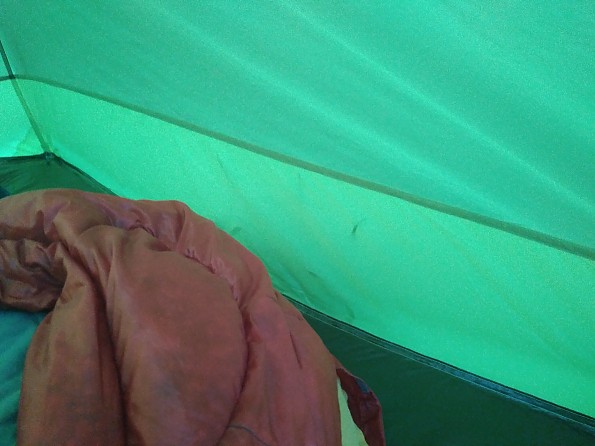

The Tungsten held pretty well under strong wind gusts, I did secure it by the side facing the wind using the included guylines (which are excellent), and it did flex and move but I wasn’t worried for a minute it will collapse. However, no stake loops or guyouts are present on the bottom of the head or legs side of the rainfly, and it’s nearly impossible to get it properly tight. Meaning those ends flap considerably and touch the inner wall when its windy.
The rainfly zipper flaps are facing the narrower end and there are Velcro attachments only on the larger vestibule. So again, if you are in a wind and rain scenario and you want the narrower end to face the wind, it means that the zipper, at least on the smaller vestibule, will be compromised.
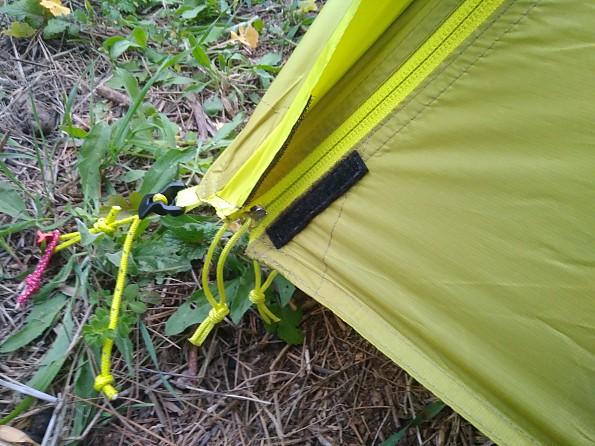
The rainfly material is polyester, which is probably better for this part than nylon, as it's more resistant to UV damage, and less prone to stretch and sagging.
Durability: Tent floor - I placed the tent mostly on sharp rocky ground with twigs and thorns. I tried to carefully remove them as best as I could before pitching the tent. I used most of the times a polycryo groundsheet by Gossamer Gear (recommended) as the tent doesn’t come with one. So far I had nothing poking through the floor.
Tent inner mesh wall: The main body is getting a good stretch when it’s pitched. Sometimes it feels like it is too tight and I set it up wrong, but that’s just how it is. However, the mesh got stretched in some spots, nothing too bad, it will keep the bugs out, but it feels to me like it’s something that shouldn’t happened.
Stakes: not good enough, I bought in advance the MSR Mini Groundhogs, which are superb.
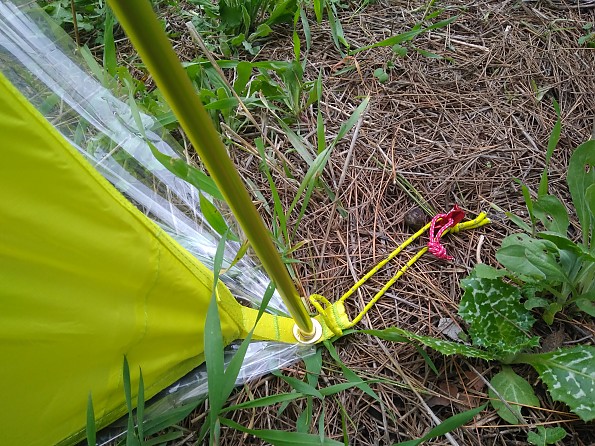
All other parts including rainfly, poles, seams, plastic parts, all seem robust and I had no issues with them.
Stuff sack: The over-sized stuff bag is very welcome, no need to struggle with getting the tent inside. I just wish it would have come with compression straps.
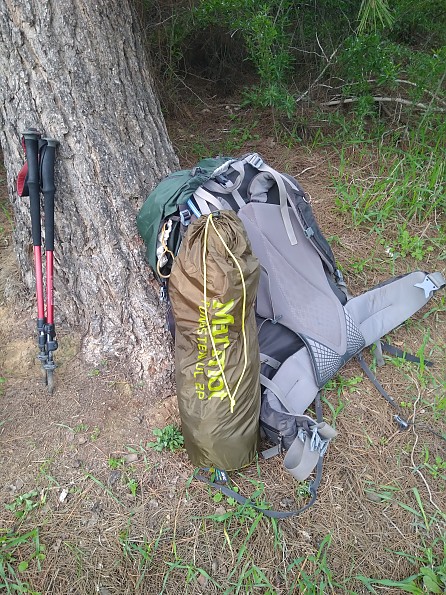
Additional Accessories: It comes with a pole repair tube, and floor and rainfly patches.
Color: I prefer tents that blend with the surroundings. Although this tent's color is a bit fluorescent in my opinion, it is still subtle enough not to poke out.
Bottom line: Although the tent has some downsides and takes some compromises, it still offers a great value-for-money in a lightweight spacious package. If you’ll use it mostly with another person, it is highly recommended.
Background
I am an experienced thru-hiker, spend many nights outdoors, have had this tent for two years with moderate use.
Source: bought it new
Price Paid: 250$
Super light for a 2-person backpacking tent plus all the headroom...
Pros
- Lightweight
- Spacious for 1 and plenty enough for 2
- Easy to set up for 1 person
Cons
- 1 small sided vestibule...not enough room for 2 backpacks and boots
- Uses hook to loop system for snapping in fly to tent, then snap clips
- Did not come with footprint for the price.
Source: bought it new
Price Paid: $254
Your Review
Where to Buy
You May Like
Specs
| Price |
MSRP: $379.00 Current Retail: $349.00-$379.00 Historic Range: $193.93-$379.00 Reviewers Paid: $250.00-$254.00 |
| Packed Weight |
3 lbs 6.5 oz / 1546 g |
| Minimum Weight |
2 lbs 15.3 oz |
| Packed Size |
22.0 x 4.5 in / 56.0 x 11.5 cm |
| Floor Area |
30.1 sq ft / 2.8 sq m |
| Vestibule Area |
15.07 sq ft / 1.40 sq m |
| Number of Doors |
2 |
| Number of Poles |
2 |
| Number of Vestibules |
2 |
| Seasons |
3-season |
| Floor Fabric |
100% Nylon, Ripstop, 47g/sqm |
| Fly Fabric |
100% Polyester, Ripstop, 46g/sqm |
| Pole Material |
DAC NFL / Pressfit Prebends |


